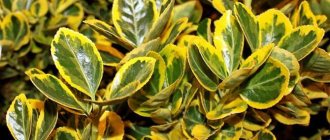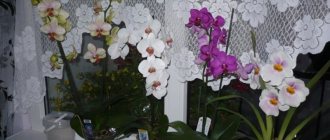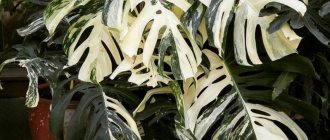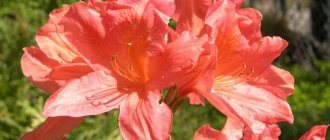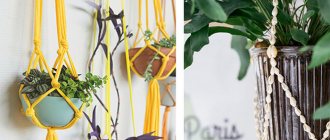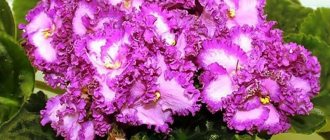Indoor plants in a Japanese interior
Japan is a country of mysteries, an amazing culture, closed to the West for a long time.
The development of Japan proceeded completely independently and parallel to the development of European civilization. And only in the 19th century did the Meiji era begin, which marked the abandonment of self-isolation and the openness of the Land of the Rising Sun to the outside world. It was then that mass interest arose, even a fashion among Europeans for everything Japanese. Japanese painting gave impetus and determined a special direction in the development of Western art. The paintings of many impressionists and post-impressionists were created under the influence of famous Japanese prints. The Art Nouveau style, which spread in Europe, also borrowed many details from the unique Japanese culture. For people who want to bring beauty into their existence, the Japanese view of the world should be relatable and interesting. For the Japanese, in principle, an aesthetic approach to the surrounding reality plays a huge role in life. They know how to admire the rising sun, fallen snow, and cherry blossoms. Unhurried contemplation of the fleeting beauty of the transitory world is one of the favorite pastimes of the inhabitants of the Japanese islands, which is reflected in their amazing poetry - haiku. However, the style of Japanese interiors remained incomprehensible to Europeans for a very long time; its elements were not very widely used in design. Only since minimalist design became widespread and recognized have many decorators adopted the techniques used in Japanese interiors.
The fact is that the main thing in arranging a home for a Japanese is amazing brevity. Those. There is practically no furniture in the room, wardrobes, carpets, sofas - all this is unacceptable for a Japanese-style interior. A single-standing bed is a tatami, like all furniture must be low. The materials used for decoration are exclusively natural: wood, stone, cotton and hemp. Bright colors are also unacceptable, clean lines, natural colors - this is what the interior in this style is based on. Screens illustrated with Japanese-style engravings are widely used. Japanese interior design is characterized by symmetry, the use of calligraphy, simple, elegant forms and soothing tones of the color palette.
Reasoning soberly, obviously, not every European will like empty rooms and bare walls. Of course, there are lovers of minimalism who readily reproduce the features of a Japanese home in their apartment. But for most of us, the oddities of Japanese interiors will remain incomprehensible, because we expect, first of all, comfort from our home. And to find it in a huge, unstructured space, you have to be Japanese. After all, even various accessories, little things and trinkets that bring individuality and warmth to a European home are unacceptable for a Japanese interior. However, a huge number of lovers of Japanese culture are very happy to use individual elements of a Japanese home in their design. After all, you can create an interior stylized as Japanese, which will be cozy in a European way, but with all its details reminiscent of the culture of the Land of the Rising Sun.
Such interior elements will be Japanese prints - either reproductions of works by great masters (for example, Katsushika Hokusai, etc.), or simply pictures drawn in the Japanese style. A branch of cherry blossoms, like nothing else, will remind you of distant Japan in the harsh Moscow winter. You can place an image of sakura on the wall or use flowering plants that resemble cherry blossoms in flowerpots. To give your interior a Japanese spirit, you can use colors characteristic of Japanese design: dark but not massive furniture, doors reminiscent of the doors of a Japanese home. However, one of the most important details with which you can bring the spirit of Japan into your apartment, of course, will be indoor plants.
In fact, Japanese-style indoor plants are not widely used. But if we create a stylization for a Japanese interior, it is home flowers that will most remind us of the nature of the Land of the Rising Sun.
Naturally, the most logical way to decorate a Japanese interior would be to use plants grown using the magnificent Japanese technique of bonsai. They can be placed on separate Japanese-style stands on a table in the center of the room. The easiest option would be to purchase ready-made plants grown in flower farms. But if you have time, and, most importantly, enthusiasm, it is quite possible to grow your own tree.
Of course, those plants that grow in Southeast Asia are very appropriate in a Japanese interior. And the most beautiful and fashionable among them, undoubtedly, can be called everyone’s favorite phalaenopsis. Caring for this plant is easy; it can be placed even in the back of a bright room. No less suitable, but more difficult to care for, are other orchids, for example, Vanda, Cambria, etc.
The indoor reed plant Pogonatherium is very suitable for a Japanese-style interior, which will allow you to reproduce in reality the bamboo branches often found in Japanese prints. Even more reminiscent of bamboo is the now very common Dracaena Sander, which is sometimes called the bamboo of luck. Perhaps you will purchase it in the form of spirally curved stems with leaves at the top or in the form of intricate pyramids. Either way, this plant is extremely hardy and will bring the most Japanese atmosphere into your home.
Fatsia will fit perfectly into Japanese design; its specific name clearly speaks of its Japanese origin. In addition, the carved leaves of Fatsia are very reminiscent of the leaves of the Japanese maple, often found in the engravings of Japanese masters. In this sense, indoor abutilone would be quite suitable, because its resemblance to maple is no less.
Due to the fact that the area of origin of Anglaonema is Southeast Asia, its use for decorating an interior stylized in the Japanese style is quite appropriate. From this point of view, a wonderful shade-tolerant and unpretentious plant - Japanese aucuba - can be called suitable for such a design. The beauties camellia and gardenia also originate from the Land of the Rising Sun, so they may well decorate the window of a Japanese interior. Small serissa can resemble sakura, and dizygoteca, with its sophistication and grace, is comparable to the sophistication of plants in Japanese prints. Finally, one cannot help but recall the increasingly popular ficus microcarpa. It can be grown in the style of a bonsai plant. But even if you bought it from a store with funny thickened roots at the base, it will still fit perfectly into your Japanese-inspired interior.
In conclusion, I would like to add that an abundance of plants, as well as an excessive amount of furniture and accessories, is still inappropriate for a room in which we want to see the trend of Japanese style. Simplicity and laconism are an invariable attribute of the room, the design of which is inspired by the culture of Japan.
Plants in Japanese style. Indoor plants in a Japanese interior
Japanese name Ajisai
.
Most types of hydrangea are shrubs 1-3 m high. The flowers are collected at the end of the stem in spherical inflorescences. The most popular large-leaf hydrangea (more than 600 varieties) has flowers that can be white, blue, lilac, pink, red (depending on the acidity of the soil). In Japan, the peak flowering time for hydrangeas is the rainy season (mid-June). Around many temples and shrines there are many hydrangea bushes (sometimes up to 150 thousand): Meigetsu-in in Kamakura, Fujimori Jinja, Tofukuji in. , Hydrangea Festivals (Ajisai Matsuri) are held in shrines and parks in Japan
Higashizawa Rose Park [Yamagata Prefecture]
Higashizawa Bara Koen (bara is Japanese for “rose”) is a seven-hectare garden with 700 varieties of roses collected from all over the world. It is one of the hundred most “fragrant” landscapes in Japan. Here you will not only see the beauty of 20,000 roses, but also be immersed in their incredible scent. You can also see the rose species "Murayama", named after the city where Higashizawa Park is located. We recommend coming here from the beginning of June to the end of September. Admission is completely free, but during the Bar Matsuri, or Rose Festival, the management sets an entrance fee of ¥600 for adults and ¥300 for schoolchildren and children.
Licorice / Higanbana
Licorice is blooming - and it is impossible to die at such a time. (c) Taneda Santoka
Licorice ( Higanbana
), the Latin name is Lycoris radiata (a bulbous plant of the amaryllis family).
It originates from Greek mythology - the Nereid Lycoris was famous for her beauty. In English, the names Red Spider Lily
and
Hurricane Lily
because they bloom before the hurricane season.
In Japanese, the main name of this flower is Higanbana
.
It blooms in September - just in time for the autumn equinox - Higana (Aki no Higan)
. But besides this, lycoris has many more names: shibito-bana - “flower of the dead”, yuurei-bana - “flower of ghosts”, tengai-bana - “flower that looks like tengai” (decoration of the dome of a Buddhist temple), yome no kanzashi - “a flower that looks like the (traditional hairpin) of the bride”, doku-bana - “poisonous flower”, manjushage (in Sanskrit - “manjusaka”) - “heavenly flower” (in Buddhist sutras there is a mention of red flowers falling from the sky, bringing joy), jigoku-bana – “hell flower”, kamisori-bana – “razor flower”, kizune-bana – “fox flower”. So mysterious and ambiguous. And everything would be fine, and the flowers in the photo are beautiful, but lycoris is not planted near houses - it is a flower dedicated to the dead. He loves to grow up on the battlefields where the blood of warriors was shed. Traditionally, lycoris is planted in cemeteries (not only as decoration, but also for protection from animals due to its toxicity). It is believed that if you bring flowers into your home, it may cause a fire. But the Japanese specifically planted lycoris on the borders of rice fields. Firstly, the bulbs strengthened the soil, preventing it from weathering and being washed away by water. In addition, poisonous plants protected crops from rodents. And finally, during crop failure, the bulbs and stems were eaten (the poison could be washed out with plenty of water). Lycoris stems emerge from the ground in autumn and bear bright red flowers. Then the flowers fade and leaves appear, which remain until the beginning of summer. So flowers and leaves can never be seen together. In Korea, lycoris was given the name “san cho” - “flowers miss leaves, and leaves miss flowers.”
Types of Fatsia with photos
The Fatsia genus is not very numerous and includes only 3 natural species (Fatsia Japonica, Fatsia Oligocarpella and Fatsia Polycarpa), and only one is firmly established in indoor culture - Fatsia Japonica. Based on this plant, several varieties that are popular today have been bred.
Spider's Web
This variety is popular due to its large carved leaves with interesting colors and relative unpretentiousness. The leaf blades are dissected into several segments and painted dark green. Green thin veins stand out effectively against the background of light edges and spots. The foliage of Fatsia Spider Web looks as if it is covered with a dense layer of silvery dust.
Murakumo Nishiki
The leaves of this Fatsia variety are colored in autumn tones. On the surface of large leaf blades there are large spots and patterns of soft yellow and lemon color.
Variegata
This Fatsia variety has dark green large leaves, along the edges of which white spots or an uneven white border are unevenly located.
Mazeri
The species is distinguished by its more compact size and short leaf petioles. The height of the bush with a lush, dense crown grows no more than 50 cm. The leaves are palmately dissected, dark green in color. Fatsia Mazeri is distinguished by its capricious disposition and requires high indoor humidity, so it is used to decorate terrariums, paludariums or tropical evergreen gardens.
Tsumugi Shibori
This variety is very similar in appearance to Spider Web, only the main color of the leaf mass is not green, but silvery-white. The leaf blades of an adult plant are almost completely light, and thin veins and specks of dark green color can be seen on them.
Fatshedera Lizei
The species is distinguished by its large size and lush leaves. The height of the evergreen shrub reaches 5 m. The leaves are 3-5 palmate, dark green in color.
Annelise
A characteristic feature of Fatsia Anneliese is the leaves of an unusual bright color. Their special color is given by the almost complete absence of green pigment, due to which the leaf blades are decorated with streaks of golden yellow or light green color.
Argenteimarginatis
A beautiful variegated variety. The main color of the leaf blades is dark green, and along the edge there are spots of golden yellow color.
Wisteria / Wisteria / Fuji
The Japanese name Fuji
is a genus of deciduous vines. They grow naturally in China, Korea and Japan, as well as in the southeastern regions of the United States. The most famous are Chinese and lush-flowering (or Japanese) wisteria. The liana can climb up to 20 meters, twisting around the trunk of a supporting tree or artificial support. Wisteria blooms in spring or in the first half of summer (depending on the species). Inflorescences of fragrant flowers of lilac, white, pink, blue can be up to 1 meter in length. Wisteria is used in landscape design. At festivals, it is often used to decorate floats or “flower umbrellas.”
Fatsia Japanese in the house: folk signs and superstitions
Fatsia japonica looks great in the house and is associated with many signs and superstitions. It decorates the halls and foyers of administrative buildings, spacious offices and retail premises, and greenhouses. The lush bush is popular for its rapid growth, attractive appearance in the interior, low maintenance, similar to dracaena. Large palmate leaves, which have a variety of colors depending on the variety, perfectly purify the air in the home and filter out harmful volatile substances.
INTERESTING TO KNOW! Fatsia is under the influence of Libra, an airy zodiac sign. Therefore, it effectively rids the air space not only of toxins, but also of negative energy.
According to legend, in the room where Fatsia is located, the atmosphere is cleared of accumulated heavy thoughts, rude and nervous words, and becomes pleasant, airily light. The plant must be purchased in a home where the inhabitants often experience emotional problems, are in a bad mood, suffer from depression, see life in gloomy colors, see no meaning in the future, and have no aspirations or hopes. It is recommended to have a fatsia for employees of offices and institutions where visitors constantly come with a negative attitude, troubles, and accumulated problems. After all, a negative attitude accumulates in the room and begins to negatively affect employees, which is why discord begins in the team.
There are many positive signs associated with fatsia.
Japanese bush:
- draws in bad energy accumulated from heavy thoughts and the gloomy mood of people;
- protects from troubles and bad consequences associated with the negative mental impact of guests and visitors;
- eliminates the desire to conflict, argue, quarrel, punish children;
- fills the home with calm energy conducive to peace and friendly relations;
- according to the sign, it improves marital relationships, prevents quarrels, omissions, relieves family members from being tired of each other, therefore it is called the “flower of family happiness”;
- extinguishes sudden attacks of nervousness and irritability.
Ruled by Libra, a large flower with spreading foliage is able to correct problems controlled by this zodiac sign regarding business and diplomatic relations. According to signs, the plant helps to acquire business acumen, helps a person build partnerships, present himself and his work in the best light. Therefore, it is recommended to place the “Japanese beauty” in offices and offices for employees who want to speak competently and convincingly and to win over partners and clients.
Where is the best place to place the plant?
Designers are very fond of the plant for its beauty and unpretentiousness. And if you take into account its cleansing psycho-emotional properties, then you can’t think of anything better . Fatsia grows well not only on the windowsill and goes well with different styles.
Based on numerous signs, they are happy to place it in the halls of administrative premises, offices, trading floors, and greenhouses . Regardless of color, the large feathery leaves of this plant remove harmful impurities and negative energy from the air.
Some concerns are raised by rumors about the toxicity of the stems and leaves of the “Japanese plant”. In fact, if the juice released is dangerous in any way, it is only an allergic reaction in a person or animal.
Some precautions wouldn't hurt:
- It is better to wear gloves when pruning and replanting plants;
- keep the pruned bush away from children;
- Handle fading flowers and developing ovaries carefully.
Fatsia japonica is a flower of family happiness. Its numerous varieties will fit perfectly into any style of home interior, clear the air of negative energy and improve the psycho-emotional climate in the house.
Camellia / Camellia / Tsubaki
Japanese name Tsubaki
.
Belongs to the tea family. In Japan (and beyond), the most famous is the Japanese Camellia (Camellia japonica)
, which originates from Southwestern China. Wild camellia is an evergreen shrub 6-9 meters high with red flowers 5-8 cm in diameter, having five to six petals and dense stamens. Many hybrids of red, pink, cream and other colors have also been bred. Some of them are double, similar to roses or peonies. One of the names of camellia is “winter rose”. In areas with a mild climate, it can bloom in the middle of winter; the flowering period is 4-5 months. Camellia is widely used for landscaping parks, gardens and indoors.
Japanese love for flowers
Having visited Japan, it is quite difficult not to notice the Japanese people’s love for flowers, because they are everywhere in this country, while the locals enjoy floriculture and grow amazing specimens that simply do not grow in other countries. In Japan, there is even such a thing as “flora art,” which is associated with the mystical beliefs of local residents and refers to a cult. The Japanese especially value flowers, snow and the moon as cults.
According to Japanese beliefs, every local resident should look at flowers from time to time and admire them, being delighted and enjoying the natural beauty. This process is called hanami and most often modern Japanese perform this ritual while eating, i.e. The dining table should always be decorated with beautiful flowers, preferably grown in your own garden.
The Japanese love for flowers is also reinforced by the mild local climate, because a sufficient amount of moisture, warmth and plenty of sun contribute to the growth of incredibly beautiful and rare plants. The Japanese not only grow flowers, but also try to give them a special and unique appearance, for example, change the natural shade of the flower itself or make the flowering more lush and voluminous.
By the way, the art of ikebana, known to many, also came to us from Japan and is an arrangement of flowers.
Sakura / Sakura
(Japanese - Sakura
) – .
Wild sakura
grows in China, Korea and Japan, but in Japan new varieties have been bred for a long time (there are several hundred of them).
The most popular type of sakura is Somei Yoshino
.
Its petals are pure white, only slightly pinkish at the base of the flower. Fuyuzakura
- winter sakura begins to bloom in the fall, and sometimes also in winter.
Yaezakura
has large flowers with dark pink petals.
Shidarezakura (weeping cherry)
has long branches hanging down with a cascade of pink flowers. Small sakura fruits are not eaten. In cooking, salted or pickled flowers are used (to add flavor to dishes), as well as leaves in which sakura-mochi, sweet rice balls with sweet bean paste, are wrapped.
Chrysanthemums
Chrysanthemum is not just a flower, but also one of the symbols of the Land of the Rising Sun. It is no coincidence that the chrysanthemum proudly displays on the coat of arms, and it can be found in any locality, even the most remote villages.
In general, chrysanthemums appeared in Asia and have always been popular in this region. But only the Japanese go crazy about them. These flowers are given for any occasion, be it the birth of a child or retirement.
Local online flower shops stock chrysanthemums in a variety of colors, again a clear indication of their popularity. You, too, can order beautiful bouquets using the Koricaflowers service, at any convenient time and for a reasonable price.
Tokkobana - kamikaze flower / Ookinkeigiku / Tokkobana
Coreopsis. The Japanese call this flower Ookinkeigiku
, which means chicken chrysanthemum. Coreopsis belongs to the Asteraceae family; its relatives are the well-known chamomile, dandelion, aster and sunflower. This is a perennial herbaceous plant, branched stems up to 60 cm tall. The leaves are petiolate, lanceolate or almost linear, and disappear as they climb up the stem. The reed flowers range from golden yellow to dark yellow and bloom very beautifully from July for about two months. The plant loves sunlight, and in Japan it can often be seen along airfield runways. In the Land of the Rising Sun there is a second name for this flower; the Japanese call it Tokkobana, which means “kamikaze flower”.
This flower growing is called tokkobana in Japanese. Tokkobana
literally means "special attack flower", but the word can also be translated as "kamikaze flower". According to legend, they appeared here because these flowers were dropped from their planes as they flew over Mount Kaimon over the southernmost point of mainland Japan on their way to Okinawa. In addition, yellow tokkobana blooms profusely in May and June near the runway of Kanoya Air Base, which served as the base for the largest number of suicide pilots during the war. When these flowers appeared in Japan remains a mystery. There are several assumptions. The most plausible theory is that planes returned to base during World War II and carried flower seeds on their wheels. Others believe that the pilots, who were 18-20 years old, still children by and large, loved the beauty of nature and brought the flowers themselves.
Tokkobana flowers play a central role in the television film A Moon Twenty-six Days Old by Y. Mairi. Three young kamikaze pilots check into a small hotel on the eve of their flight and become friends with an eight-year-old girl at the inn. When they leave in the morning, the girl gives each of them a bouquet of yellow tokkobana flowers, which the three pilots drop on the lower slopes of Mount Kaimon, where today there is a huge field of these flowers.
Plants for the Japanese garden
do not necessarily have to be of Japanese origin, especially since the vast majority of these island sissies simply will not survive in our climate.
But many of our plants are perfect for the Japanese garden, and the style of the latter will not cause any doubt.
Its skeleton, like many other gardens, is made up of trees and shrubs. Among them, maples, small-leaved rhododendrons and numerous forms of conifers are undoubtedly in the forefront.
The main mass will be herbaceous perennials.
, many of which are so strongly associated with the Japanese garden that it is inconceivable to imagine that there would not be room for at least some of them in the newly created Japanese garden.
First of all, these are, of course, irises
.
All types of irises are suitable for the Japanese garden, but first of all we are usually talking about large-flowered species of irises, for example, xiphoid iris, its other name is Kaempfer's iris (Iris ensata, Iris kaempferi).
They prefer moist, slightly acidic soil and thrive well along the banks of natural and artificial reservoirs, and they can be safely planted so that the rhizome is located below the water level.
Orchids - a favorite of the Japanese from another fairy tale
It is generally accepted that orchids, which can be seen so often in Japanese pictures, are also a kind of symbol of the land of the rising sun. In fact, this is not so, because the birthplace of the orchid is considered to be South America, although the flower itself is highly revered in Asian countries, for example, in Thailand and Japan.
In Japan, they love orchids, and the climate of this country is perfect for growing this exotic plant. It is the Japanese who quite often conduct experiments when growing orchids at home and modify their colors, flower shapes, or propagate plants in a simple way.
Learn to admire flowers from the Japanese and then life around you will seem much brighter, more colorful and tender, and calmness, tranquility and a complete feeling of happiness will flourish in your soul.
Description
Camellia is admired for its perfection. Mention of it was made by Japanese chroniclers at the beginning of the first century. In Europe, the flower appeared in the middle of the 17th century and was named after a monk with the surname Camellus, who studied the plant in detail and gave its description. In Japan, exotic culture grows in the south of the country. It is also common in China, South Korea, and Taiwan.
The beautiful double flowers of Japonica belong to the tea family. The plant can be found in nature in the form of a tree reaching a height of 10–11 meters or a shrub reaching up to 150 cm. In our country, a flower with decorative leaves is grown mainly at home. An adult houseplant or greenhouse specimen stops growing at 2 meters.
Its leaves are dark green, can be from 8 to 10 cm in length, and reach 50 millimeters in width. They are very dense in structure. The branches of Japanese camellia are dark gray, and young annual shoots have a brownish tint. The basis of the plant is a flower that is not inferior in beauty to pink buds. It may have a red, pink or white tone.
Breeders managed to obtain a large number of varieties of spectacular flowers, growing in diameter from 40 to 150 mm. In structure, it can be single or in the form of a brush, it can consist of the usual 5 petals with yellow stamens surrounding it, or it can be a fluffy terry inflorescence endowed with more than 20 petals. There are semi-double samples. This wonderful plant blooms both in winter and spring. It does not tolerate cold weather at all, so in our country it can be found in houses, greenhouses, and winter gardens.
Important! Growing japonica indoors is not entirely easy; you need to know the intricacies of its maintenance conditions.
There are more than 250 different varieties of camellias in the world. Gardeners are accustomed to seeing Japanese camellia in the form of a lush shrub with numerous flowers. Its flowering lasts almost six months and occurs in the time interval from November to May inclusive. In Eastern medicine, it is used as a remedy to fight cancer. The most popular types of Japanese camellia are considered to be “Alba”, which has simple five-petaled white flowers, as well as a plant called “Winter Rose”. It is decorated with snow-white or pink large buds, which are terry in structure.
Known types of Japanese camellia are the following:
- Adolphe Audusson - distinguished by large (up to 12–13 cm) red double flowers; red camellia blooms in spring;
- Pink Perfection - large double flowers, reaching 7–8 cm in diameter, they have a delicate pink tone; the flowering period occurs in spring;
- Japonica Purity - this plant has large (up to 80 mm in diameter) white flowers, is a perennial specimen and also blooms with the arrival of spring;
- William S. Hastie - is a bush with large (up to 5 cm in radius) crimson flowers, has lush and double buds; flowers appear in spring;
- Chandlers Red is a solid red camellia with large, dense flowers.
A little history
Until the mid-19th century, there was no plant named Fatsia. The evergreen tree, brought from Japan to Europe, won universal love under the name Aralia japonica. Many people liked the feathery, large, glossy leaves and the non-capricious nature of the plant. Japanese Aralia began to be grown in homes for landscaping shaded areas. However, botanists studying the Araliev family decided to identify a separate genus in 1854 called Fatsia. It included only three species. They differ from other Araliaceae in the special structure of their leaves and inflorescences, and most importantly, in the fact that they are not deciduous, but evergreen plants.
Conditions of detention
Japonica is a plant that very sensitively senses the slightest changes in its environment. In indoor conditions, camellia can grow, but it will not bloom. In order for the plant to form flower buds, it must be in a room where the temperature can be maintained at a level of -15 degrees to +6 degrees Celsius. The best place for a flower would be an insulated veranda, a greenhouse or any room in which the air does not warm up above these limits. In summer, japonica should be taken out into the garden or placed on a darkened balcony. If your flower spends a lot of time in a room with high temperatures above zero, it will certainly begin to bloom.
Important! The plant should be kept in a lighted place all year round. Special lighting is provided in greenhouses. Camellia likes light diffused rather than focused on the bush.
Diseases
Fatsia is a flower that is quite resistant to all kinds of diseases. If you follow the rules of care, it will not cause you any trouble. But if you violate them often, problems may arise:
High humidity and excessive dampness of the substrate can cause root rot.
The flower should be transplanted into a new substrate, after shaking off the old soil and examining its roots. If you find that all the roots have softened and darkened, it is too late to treat the flower, throw it away. If most of the roots are white and elastic, the plant can be cured. Rinse off all old substrate under the tap. Remove all damaged (rotten, dry and broken) roots with a sharp, clean knife. Remove wilted shoots and leaves. Treat the cut areas with potassium permanganate, then powder with crushed coal, and only then plant in a new (or old disinfected) pot in a fresh substrate suitable in composition for decorative foliage indoor flowers. Water the soil with a fungicide solution (for example, phytosporin). Place the pot in a bright, warm place, but not in the sun.
If the substrate humidity is low, the tips of the leaves will dry out.
Do not wait until the earthen ball dries out completely. Water the flower in a timely manner, as soon as the top layer of soil dries a couple of fingers. Otherwise, not only the tips, but all the leaves will dry out and fall off.
Excessively dry indoor air can cause Fatsia leaves to become brittle and wrinkled.
The flower should be frequently sprayed with warm, settled water, and its leaves should be wiped with a damp cloth or cloth. From time to time, you can arrange a cool shower in the bathroom, covering the substrate with plastic film or a bag. If the problem occurs during the heating season, try to move the pot away from the radiator or cover the radiator with damp towels.
Excessive soil moisture will cause the leaves to soften and turn yellow.
Do not water the flower while the soil remains damp from previous watering. Drain excess water from the pan, do not let it stagnate there. Use filtered, settled, warm water.
From hypothermia and waterlogging, the plant may also lose some of its leaves.
Maintain the ambient temperature within normal limits, 22 - 24 degrees. all year round, unless you send the plant to hibernate in a cold room. But even there the temperature should not be lower than 16 - 18 degrees.
If you often flood the soil, a gray, sometimes brown, coating may appear on the lower part of the stem. This disease is called Gray rot.
If this happens, then the flower needs to be transplanted urgently. Moreover, the old soil should be completely removed from the roots, dead and damaged roots should be cut off. Treat with some fungicide or manganese. Only then plant Fatsia in new soil and water it with the addition of the same fungicide. If the case is advanced, then you are unlikely to be able to save the flower.
What to do if Fatsia stops growing.
Perhaps he felt cramped in the potty. See if its roots are peeking out of the drainage holes. If so, then replant the plant in a suitable pot. If everything is fine with the pot, the possible reason is poor soil. Remember the last time you fed a flower. Perhaps it's all about rare feedings.
Why did the variegated leaves of Fatsia lose their brightness and become uniformly green?
The reason is poor lighting. Variegated varieties need bright light all year round. In winter, they definitely need lighting using fluorescent lamps, fluorescent lamps or phytolamps for up to 10 - 12 hours a day.
The second reason is poor soil. Feed your pets regularly, and then they will delight you with their beauty.
How to care?
A growing Japanese camellia should be watered thoroughly, but not overwatered. After the bush has bloomed and enters a state of rest and dormancy, watering at home should be done less frequently, the main thing is that the substrate does not become completely dry in the flower pot. The soil in which japonica will grow must be acidic, so there is no point in planting it in ordinary soil from your garden. Usually, specialized stores sell universal soil, and if it is not available, then you should purchase a substrate for azaleas.
You can prepare the soil composition yourself at home if you take drainage, which is then placed at the bottom of the pot. After this, mix the four indicators. Sand must be combined with turf and leaf soil, as well as peat. Turf and sand are taken in the amount of one portion, and two compositions of peat and leaf soil are added to them. You can also use the bark of coniferous trees.
Important! Once a month it is necessary to feed the japonica by adding fertilizers used for azaleas to the soil. If the flower has buds, then the number of feedings can be increased to 2-3 within 30 days.
The plant must be pruned once every 2 years. This procedure promotes the formation of a lush crown of the bush and the removal of weak shoots. Pruning should be done starting from the inside, thereby leaving large inflorescences located at the tips of the branches of the bush to grow. The procedure is performed during the autumn months such as October and November. In the southern regions of the country, where in winter the air temperature does not drop below +20 degrees, growing Japanese camellia is possible not only at home, but also in gardens. To make it easier to care for the shrub, it is planted in late autumn or early spring, at a time when very active growth of shoots has not yet occurred.
The hole for planting camellias is made large. It should be 2 times the size of the earthen coma around the seedling itself. The soil can be additionally acidified with spruce or pine bark. A drainage is placed at the bottom of the hole, and a lump with the roots of the seedling is placed on it. It is necessary to ensure that the root collar is not covered with soil. Afterwards, the trunk is filled up and the soil is mulched with sawdust, conifer bark or shavings. During cold weather, the mulch layer is increased.
The flower bush should grow in places where there are no drafts, as well as direct exposure to sunlight. From May to July, mineral supplements are applied. For the winter, it is advisable to cover the crown and trunk, which can be done using spruce branches or material.
Reproduction
You can get new fatsias vegetatively and from seeds. There are two vegetative methods: apical cuttings and layering.
Cuttings
Fatsia cuttings are carried out before spring awakening; it can be combined with pruning, or in the summer.
- Cut the tops of the shoots with 2-3 buds.
- Dip the sections into a stimulant solution (epin, zircon).
- Prepare a sand-peat substrate, pour it into a greenhouse or cups, and moisten it.
For rooting you need poor and light soil - Bury the cuttings in the substrate.
- Cover the greenhouse with a lid and cups with bags.
- Place in a warm (+23–26) and bright place.
- Moisten and ventilate periodically.
Ventilate and moisten the cuttings - Cuttings usually take root quickly.
- After rooting, transplant the young plants into pots with nutritious soil.
By layering
This method is suitable if the plant is too elongated and its stem is exposed.
- In spring, make a circular cut on the trunk.
- Wrap this place with damp moss, you can soak it in a stimulant, and cover it with plastic wrap or put a glass on top.
- Keep the moss moist.
- After 4–6 weeks, roots will form at the incision site.
- Let them get stronger, and after a month and a half, cut the trunk just below the new roots.
- Plant the plant in a suitable pot.
- Cut off the remaining trunk and cover with damp moss.
- Water it so that side shoots begin to grow.
Seeds
Fatsia seeds can be obtained at home with some effort. But most often they give low germination because they do not ripen to the end. You can purchase seed material in the store. Just keep in mind that fatsia seeds have a short shelf life. And it is difficult to grow this plant from seedlings.
- Start the sowing campaign in March. Prepare a soil substrate from equal parts of leaf soil and sand.
- Before planting, check the quality of the seeds. Throw them into the water. Those that have surfaced are not suitable for sowing. Plant only those that have sunk to the bottom.
- Plant the seeds to a depth of 0.5 cm in a moist substrate.
- Cover the greenhouse and place it in a warm (+25) place.
- When 2–3 young leaves appear, plant the seedlings in pots (5–7 cm in diameter).
- Over the summer, transfer them two or three times to larger pots and nutritious soil.
Video: propagation of fatsia by cuttings
Plants in Japanese style. Indoor plants in a Japanese interior
Japanese name Ajisai
.
Most types of hydrangea are shrubs 1-3 m high. The flowers are collected at the end of the stem in spherical inflorescences. The most popular large-leaf hydrangea (more than 600 varieties) has flowers that can be white, blue, lilac, pink, red (depending on the acidity of the soil). In Japan, the peak flowering time for hydrangeas is the rainy season (mid-June). Around many temples and shrines there are many hydrangea bushes (sometimes up to 150 thousand): Meigetsu-in in Kamakura, Fujimori Jinja, Tofukuji in. , Hydrangea Festivals (Ajisai Matsuri) are held in shrines and parks in Japan
Sunflower / Himawari
The Japanese name for sunflower is Himawari . The color yellow in Japan is associated with the end of summer, representing the life-giving forces of the elements, the earth. It also embodies the idea of "center", balance, order. Yellow flowers are given to those whom they wish goodness and prosperity. In Japan, specially bred ornamental sunflower varieties are planted “for beauty.”
Licorice / Higanbana
Licorice is blooming - and it is impossible to die at such a time. (c) Taneda Santoka
Licorice ( Higanbana
), the Latin name is Lycoris radiata (a bulbous plant of the amaryllis family).
It originates from Greek mythology - the Nereid Lycoris was famous for her beauty. In English, the names Red Spider Lily
and
Hurricane Lily
because they bloom before the hurricane season.
In Japanese, the main name of this flower is Higanbana
.
It blooms in September - just in time for the autumn equinox - Higana (Aki no Higan)
. But besides this, lycoris has many more names: shibito-bana - “flower of the dead”, yuurei-bana - “flower of ghosts”, tengai-bana - “flower that looks like tengai” (decoration of the dome of a Buddhist temple), yome no kanzashi - “a flower that looks like the (traditional hairpin) of the bride”, doku-bana - “poisonous flower”, manjushage (in Sanskrit - “manjusaka”) - “heavenly flower” (in Buddhist sutras there is a mention of red flowers falling from the sky, bringing joy), jigoku-bana – “hell flower”, kamisori-bana – “razor flower”, kizune-bana – “fox flower”. So mysterious and ambiguous. And everything would be fine, and the flowers in the photo are beautiful, but lycoris is not planted near houses - it is a flower dedicated to the dead. He loves to grow up on the battlefields where the blood of warriors was shed. Traditionally, lycoris is planted in cemeteries (not only as decoration, but also for protection from animals due to its toxicity). It is believed that if you bring flowers into your home, it may cause a fire. But the Japanese specifically planted lycoris on the borders of rice fields. Firstly, the bulbs strengthened the soil, preventing it from weathering and being washed away by water. In addition, poisonous plants protected crops from rodents. And finally, during crop failure, the bulbs and stems were eaten (the poison could be washed out with plenty of water). Lycoris stems emerge from the ground in autumn and bear bright red flowers. Then the flowers fade and leaves appear, which remain until the beginning of summer. So flowers and leaves can never be seen together. In Korea, lycoris was given the name “san cho” - “flowers miss leaves, and leaves miss flowers.”
The most beautiful flowers in the world
Many gardeners give first place in terms of flower beauty to the chrysanthemum. No matter how surprising it may sound, the Japanese themselves are also very fond of this plant. At the same time, chrysanthemums are grown in Japan not only in late summer and autumn, but from the beginning of spring. This asteraceous plant is so diverse and beautiful that the beautiful roses familiar to many can only envy the coloring of chrysanthemums, the fullness of their buds and the number of varieties. The best poets of Japan very often praise the chrysanthemum in their poems. The Japanese not only admire these flowers, but also often add them as additives to a variety of dishes or drinks, such as teas.
The chrysanthemum in the land of the rising sun is not only praised, but exhibitions dedicated to it are also often organized, and incredible compositions are created from flowers that an ordinary person cannot even imagine.
The second most beautiful and majestic Japanese flower is, of course, sakura. It is with this that the Japanese most often associate the tradition of admiring hanami flowers, because shortly before the cherry blossoms begin, even on TV they make forecasts for the flowering of trees in a particular area, so that local residents and guests of the country can enjoy the beauty of the flowers, their grandeur and luxury. Almost everywhere you can find gardens and parks with sakura, which during flowering will make any area especially beautiful, peaceful and suitable for spending time.
Among the unusual but very important plants in Japan, we should note the mythical benibana, which on the mainland is often called the scarlet flower. The color of this flower is very unusual - orange with a mixture of crimson. Benibana blooms in the summer, when all the mountains are covered with scarlet carpets. The flower itself belongs to the chrysanthemum genus and is very similar to the domestic thistle.
Wisteria / Wisteria / Fuji
The Japanese name Fuji
is a genus of deciduous vines. They grow naturally in China, Korea and Japan, as well as in the southeastern regions of the United States. The most famous are Chinese and lush-flowering (or Japanese) wisteria. The liana can climb up to 20 meters, twisting around the trunk of a supporting tree or artificial support. Wisteria blooms in spring or in the first half of summer (depending on the species). Inflorescences of fragrant flowers of lilac, white, pink, blue can be up to 1 meter in length. Wisteria is used in landscape design. At festivals, it is often used to decorate floats or “flower umbrellas.”
Flower of the Dead
It is known that flowers of death often grew on battlefields where a lot of blood was shed. Although popular rumor has it that the plant thrives in such eerie places, most likely the Japanese deliberately planted higanbana in shallow burial places to prevent grave robbers from robbing graves and wild animals eating corpses.
You might be interested:
- Funeral industry in Japan
- Funerals in Japan: traditions and ceremonies
- Flowers to lay on the grave
Camellia / Camellia / Tsubaki
Japanese name Tsubaki
.
Belongs to the tea family. In Japan (and beyond), the most famous is the Japanese Camellia (Camellia japonica)
, which originates from Southwestern China. Wild camellia is an evergreen shrub 6-9 meters high with red flowers 5-8 cm in diameter, having five to six petals and dense stamens. Many hybrids of red, pink, cream and other colors have also been bred. Some of them are double, similar to roses or peonies. One of the names of camellia is “winter rose”. In areas with a mild climate, it can bloom in the middle of winter; the flowering period is 4-5 months. Camellia is widely used for landscaping parks, gardens and indoors.
Japanese flowers
Japan is an amazing country with its parks and squares created according to the ancient traditions of Japanese art. It is in this country that the concept of hanami - admiring flowers - exists. The Japanese respect flowering plants, admiring their beauty and aroma. Any tea ceremony is accompanied by table decoration with a composition of flowers.
The nature of this amazing country also comes to the aid of local residents when growing them. Lots of sun, moisture, and a mild climate make it possible for many rare plants to grow and flourish. In addition, the Japanese not only plant flowers everywhere, but strive to increase the flowering period, develop plants of unusual colors, and increase their volume and splendor. It is not for nothing that there is a statement that Japanese flowers are the most beautiful.
Sakura / Sakura
(Japanese - Sakura
) – .
Wild sakura
grows in China, Korea and Japan, but in Japan new varieties have been bred for a long time (there are several hundred of them).
The most popular type of sakura is Somei Yoshino
.
Its petals are pure white, only slightly pinkish at the base of the flower. Fuyuzakura
- winter sakura begins to bloom in the fall, and sometimes also in winter.
Yaezakura
has large flowers with dark pink petals.
Shidarezakura (weeping cherry)
has long branches hanging down with a cascade of pink flowers. Small sakura fruits are not eaten. In cooking, salted or pickled flowers are used (to add flavor to dishes), as well as leaves in which sakura-mochi, sweet rice balls with sweet bean paste, are wrapped.
Diseases and pests of Japanese flowers
The main pests of Japanese flowers are:
- Spider mites and scale insects are combated by wiping plants with soapy water. To prevent spider mites, the Japanese umbrella is irrigated daily with a spray bottle to increase humidity.
- Root or gray rot. Replacing the soil, pruning diseased roots and treating them with potassium permanganate helps here.
- Fungal diseases. Treatment with fungicides helps against them.
If you really want to, you can create a little Japan at home by growing flowers and enjoying their beauty. But in order for everything to go without a hitch, you should keep in mind the features of cultivation and care described above.
